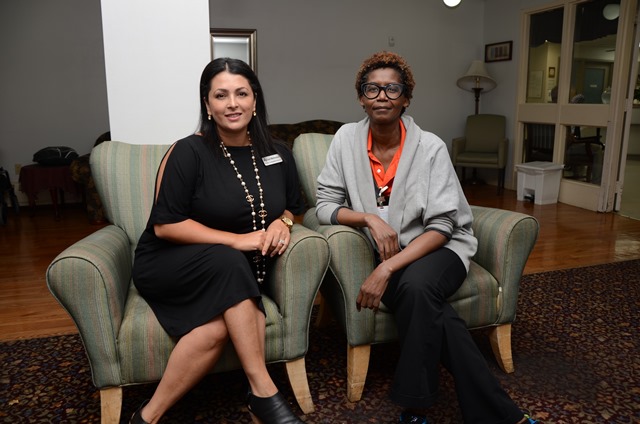By Drew Tapley
About 80 per cent of residents at Camilla Care Community in Mississauga, Ontario, display some form of dementia-related responsive behavior. A lot of the antipsychotic medication they are prescribed has side effects that include falling asleep and drowsiness; and sometimes these residents switch night and day—known as ‘sundowning’—and are up at night, often restless.
Mariam Mehreban is the director of resident programs at Camilla, part of Sienna Senior Living, and came up with the idea for the Night Owl program in January 2015 when she began to notice a significant change in the residents being admitted.
“As the needs of the resident population changes, the way we deliver programs has to change as well,” says Mariam. “Every responsive behaviour means there is a need that is not being met. Programs that worked a year ago may not work today, and even the lingo and language within care communities is changing.”
Night Owl is offered five nights a week, from 11.30 p.m. to 7.30 a.m., and consists of one full-time recreation team member. The goal is to increase it to seven days.
The program provides therapeutic engagement, one-on-one or in small groups, and the response has been positive because, Mariam points out, it doesn’t conflict with meal service, baths and showers. It’s conducted in a very quiet lounge area during the night, which is utilized for meal service, family visits and programs during the day. These busy activities have been known to trigger a lot of responsive behaviours.
Rose Bramwell is the recreation aide who has been running the program since January 2015. She says residents can be more engaged in programs that run at night.
“There is not all the congestion and commotion during the night. Programs are more effective, and have better results,” says Rose. “Residents don’t realize that they need rest and should to go to bed, and want human contact most of the time. I find that they want to be engaged and interact with me or each other, and talk about their lives and interests. Music tends to be a big topic.”
Groups average anywhere from three to eight residents, and tend to vary each night, and each hour. The same residents don’t necessarily turn up night after night, or even two consecutive nights in a row.
Rose says that residents are able to develop friendships through the program, and remember a face and an interaction even though they might not remember what they were talking about.

“These were residents we weren’t able to reach before because if they were up at night they were sleeping during the day,” Rose says. “Their activity involvement and socialization has increased, and we’ve noticed a decrease in their responsive behaviours.”
Night Owl offers residents different activities, such as art therapy, doll therapy, and sensory stimulation like hand massage, listening to soft music, walking and engaging them in conversation. They might even bake bread, depending on the interests of the individual. And some might just be looking for food or drink.
Even residents who don’t have responsive behaviours but are awake at night take advantage of the program. Seniors generally tend to have more naps during the day, and are therefore not going to have a continuous six or seven hours of sleep at night.
“I think we are the only home in Canada that offers this program for residents who experience sundowning or night owling,” said Mariam. “On the nights when there is no Night Owl, we look at the Dementia Observation System and documentation on PPC, and notice increases in falls, responsive behaviours and restlessness.”
But despite the program, some responsive behaviors still occur.
“There are times when a resident is in pain or needs to be toileted and can’t express it, which is sometimes one of the triggers,” says Rose, who explained how the program is continually evolving.
Camilla’s resident and family engagement surveys show lots of positive feedback and support for Night Owl, which was initially focused solely on responsive behaviors. Now, about five per cent of residents who don’t engage during the day will come to the program and engage with a craft.
There might also be a wider application for the program in the local community where spouses are still the primary caregivers, and can easily get burnt out.
“There are adult day programs, but nothing during the night to give that caregiver a break,” says Rose. “Perhaps switching some programs to night will allow people to attend and continue living out in the community.”
Drew Tapley is a Writer with Sienna Senior Living.




